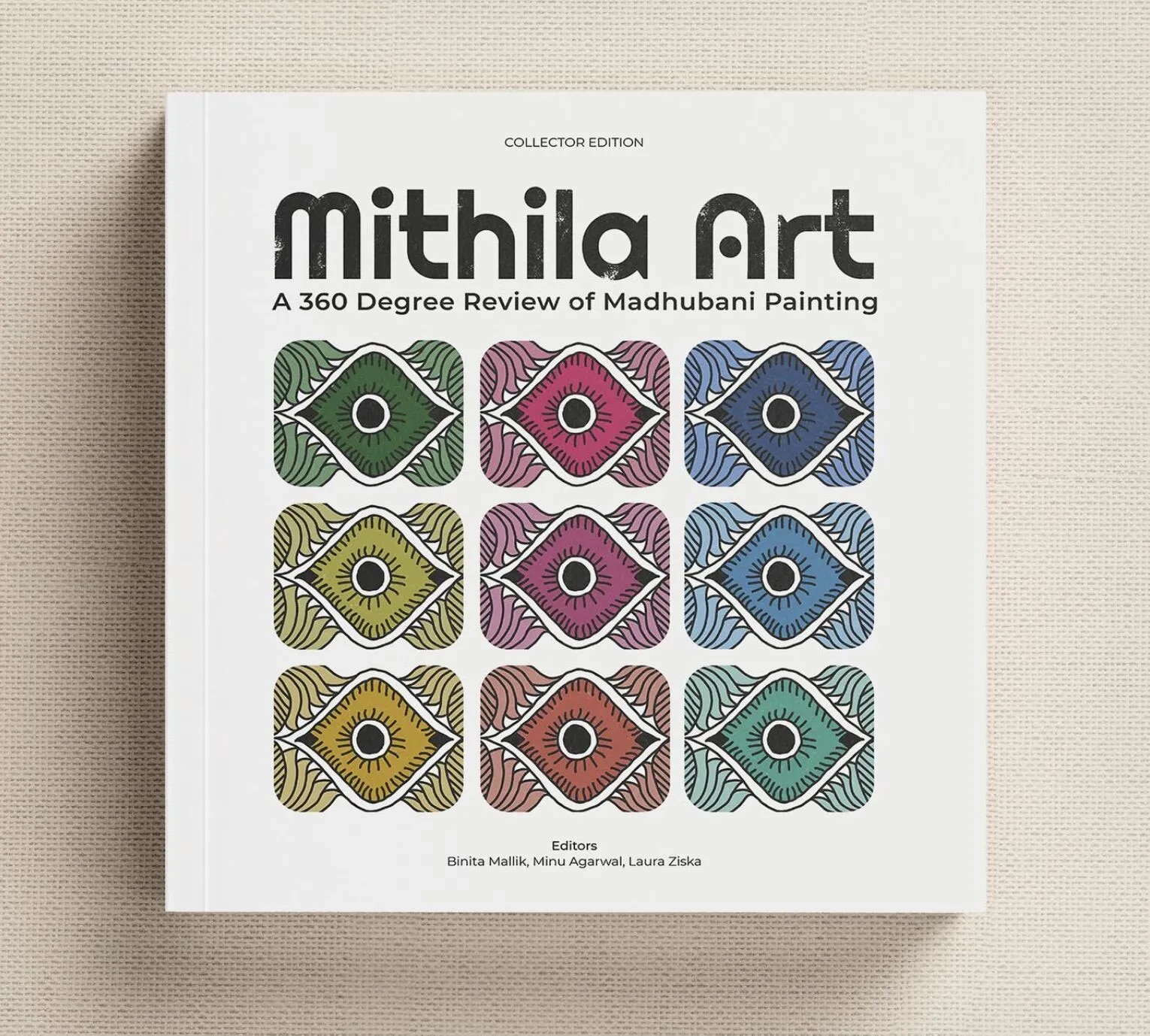With the creative vision of Shreya Sarda’s Mumbai-based design firm DesignFlyover (DFO), this book transforms texts and images into a rich visual experience.
New Delhi: To revive and promote the rich heritage of India, a board of editors, announced the launch of India’s first-ever holistic literary work on Madhubani Art, “Mithila Art: A 360 Degree Review”. The curtain-raiser event was held at New Delhi’s Lalit Kala Academy in presence of artists, culture enthusiasts and general public.
Mithila Art, popularly known as Madhubani Art because of its origin in the Madhubani district of India, is an indigenous art form most prevalent in Bihar and Nepal has transcended its regional confines, earning global appeal. However, the introductory literature written so far about this art remains limited, often punctuated with inaccuracies and a lack of concrete scholarly rigor.
The vacuum of a well-documented and accessible resource was the driving force behind this publication.
Curated by Co-editors Binita Mallik (Mithilangan, New Delhi), Dr Minu Agarwal (CEPT University), Dr Laura Zizka (EHL, Switzerland), Professor (Dr) Prashant Das (IIM Ahmedabad), “Mithila Art: A 360 Degree Review” has been perfected over years of rigorous scholarly activities, carefully weaving their individual discoveries on the subject in a captivating page-turner.
Championed with forewords by illustrious personalities including Amitabh Kant, former CEO of Niti Ayog and Chanchal Kumar, Secretary, Ministry of Development of North Eastern Region, the book aims to blend scholarly content with an engaging narrative style, making it both an academic reference and a visually appealing addition to coffee tables worldwide.
With the creative vision of Shreya Sarda’s Mumbai-based design firm DesignFlyover (DFO), this book transforms texts and images into a rich visual experience. The design team spent months crafting each page into a work of art, ensuring a storytelling journey that is both visually stunning and deeply informative. “If you own a piece of mithila art, but wonder about its meaning beyond its playful simplicity, this book is for you. It will reveal dimensions known to few beyond the inner circles.”, said Dr Minu Agarwal sharing her profound interest in the topic.
Speaking about the curtain raiser, Prof Prashant Das, said, “My tryst with Mithila art is more personal, as I come from the region of its origin. The fact that this vast topic remained unscripted moved me to come together and create a reference point for art lovers and enthusiasts to follow around the world.
The project conceived in 2018 from Switzerland has inputs by scholars from India, US, France and Switzerland; opinion pieces by art lovers of international repute; and interviews by the world-renowned Mithila artists from India and around the world, bringing nuanced perspective.”
His thoughts were echoed by Dr Laura Zizka who said, “What an inspiring topic and rewarding task! In a world filled with 21st century frenzies, this book brings us back to what is most important…where we began and who we are. Each chapter is a gem filled with heart and insight.”
As the books tries to present the ancient artforms of India, Ms Binita Malik from the team of editors, puts it, “Every field of work has a special language and a grammar of its own which makes it easy to learn. That is what we have tried to convey through this book”. This book is all about narrating the vivacious tale of madhubani art, celebrating Mithila culture and its visions; but backed by facts and research.
The book, published by Adarsh Books, New Delhi, is set for its first publication in 2024. Interested readers can secure their copy and embark on a journey of artistic discovery that celebrates this captivating cultural heritage.
About the Book:
Mithila Art: A 360 Degree Review of Madhubani Painting serves as a vital resource for anyone interested in understanding Mithila Art. It combines scholarly research with accessible narratives, offering insights from both global scholars and prominent artists. By bridging the gap between traditional art forms and modern cultural studies, this book positions Mithila Art not only as a subject of academic inquiry but also as a living, evolving practice with deep roots in the cultural fabric of India.







